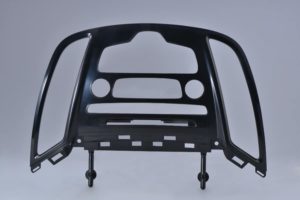
Plastics have been integral to the manufacturing process for decades, and plastic injection molding has become one of the most widely used types of plastics manufacturing. There are many advantages to using this type of manufacturing:
There is a wide array of different plastics that can be used for injection molding, and each type of plastic offers its own unique advantages. For example, some types of plastics may be better than others for injection molding certain components, depending on the purpose of the finished product.
Most Popular Plastic Injection Molding Materials
First, let’s look at some of the most popular plastics used for plastic injection molding:
Polyethylene terephthalate (PET)–PET is a clear, tough polymer with exceptional gas and moisture barrier properties. PET has a very high degree of crystallinity and a slow crystallization rate, which gives it exceptional dimensional stability over a wide temperature range. It is a versatile plastic that is commonly used for bottles, shrink film and various injection molded components.
Polycarbonate–Polycarbonate (PC) provides tremendous impact strength, along with toughness and dimensional stability over a wide temperature range. PC can be transparent or opaque depending on the colorants added to it during the production of the material. PC is ideal for a multitude of applications, including film applications, blow-molded parts, and various injection molded components.
Polypropylene–Polypropylene (PP) has good stiffness, strength, toughness, and chemical resistance while being easy to mold and inexpensive to produce. It can be transparent or opaque depending on the colorants added to it during manufacturing.
Plastics are primarily used in manufacturing applications for their durability and mechanical properties. Plastics can be molded into virtually any shape and size. They provide lightweight, corrosion-resistant solutions that stand up to the toughest conditions and resist chemical degradation without corroding or rusting. Plastics also do not need to be painted or primed prior to installation.
5 Advantages
At last, the 5 major advantages to using plastic injection molding for the manufacturing of parts are:
Easy to Use
The raw materials are easy to use. The cost of production is low due to ease of processing. You can have a great deal of power when molding plastics because you choose the type, color, and density of your final product.
Plastics are Cost-Efficient
The cost of processing and manufacturing plastics is usually much less expensive than other materials that can be used in manufacturing, such as metal or glass. Many companies turn to plastics manufacturing because it is more cost efficient than other types of manufacturing.
Plastics can be injection molded to create parts that are saved from breakage, as opposed to glass or metal. If you have a great design idea but have concerns about commercial success because it cannot be mass-produced because of high costs, plastics may be the answer.
Plastic Injection Molding Increases Productivity
Plastic injection molding can bring a higher level of productivity and efficiency than many other methods of manufacturing products. The plastic process speeds up the overall manufacturing process by allowing companies to produce several products at once, rather than manufacturing one product at a time, as many other materials require.
Plastic Injection molding is an efficient method to produce many parts at once. The molds are designed for mass production and the plastic injection process allows it all to be done quickly, so less time is wasted on each part.
Plastic injection molding also has the benefit of having faster turnaround times than other manufacturing processes. This can be very beneficial to companies that need to quickly produce a large number of parts because plastics take less time to create than many other materials. This way, companies are able to cut down.
Plastics are Versatile
Plastics are versatile and come in various forms that can be used for various types of applications. Thermoplastics, thermosets, elastomers, polymers, copolymers, or any combination of these can create a wide range of products.
Plastics are Customizable
There is a wide range of plastics and plastic formulations that can create many types of products. Many times, this allows companies to create their own unique product line using the plastic injection molding process.
Conclusion
Companies that use these five major advantages find a higher success rate when it comes to parts manufactured through plastic injection molding. For this reason, many companies choose to take advantage of the benefits that come with this type of manufacturing process.








